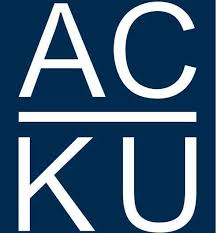قانونجه فی الطب / محمود ابن محمد.
Material type: TextLanguage: Dargwa Publication details: [پاکستان] : [ناشر مشخص نیست]، 1761.Description: 36 صفحه ؛ 30 سانتی مترSubject(s): LOC classification:
TextLanguage: Dargwa Publication details: [پاکستان] : [ناشر مشخص نیست]، 1761.Description: 36 صفحه ؛ 30 سانتی مترSubject(s): LOC classification: - رسالهPK6529 ق
| Item type | Current library | Call number | Status | Date due | Barcode | Item holds | |
|---|---|---|---|---|---|---|---|
 Monograph
Monograph
|
Afghanistan Centre at Kabul University | رسالهPK6529ق 29 1761 (Browse shelf(Opens below)) | Available | 3acku000463066 |
The Library of Congress donated copies of the digitized material (along with extensive bibliographic records) containing more than 163,000 pages of documents to ACKU, the collections that include thousands of historical, cultural, and scholarly materials dating from the early 1300s to the 1990s includes books, manuscripts, maps, photographs, newspapers and periodicals related to Afghanistan in Pushto, Dari, as well as in English, French, German, Russian and other European languages ACKU has a PDF copy of the item.
کليه حقوق دجیتالی اين کتاب برای پدیدآور و مرکز منبع معلومات افغانستان در پوهنتون کابل محفوظ است هر ﮔﻮﻧﻪ نشر و اضافه کردن آن در سایت های دیگر بیدون اجازه ممنوع است.
Only the PDF copy is available in ACKU library.
"The title of Mahmud ibn ʻUmar al-Jaghmini’s medical text, the Qānūncha, (or Qānūnja in Arabic), is a reference to Avicenna's seminal work on medicine, al-Qānūn (The canon). The suffix -cha is a diminutive in Persian, so the title of al-Jaghmini’s work can be translated as “The little canon.” The Qānūncha is written in ten chapters: 1, al-Umūr al-ṭabiʻiya (On natural philosophy); 2, al-Tashriḥ (On anatomy); 3, Aḥwāl badan al-insān (On the states of the human body); 4, al-Nabḍ (On the pulse); 5, Tadbir al-aṣḥḥā’ wa ‘alāj al-maraḍ (On the management of those of sound health and treatment of illness); 6, Amrāḍ al-ra’s (On diseases of the head); 7, Amrāḍ al-aʻḍā’ min al-ṣadr ilā asfal al-surra (On diseases of organs housed between the chest and the navel); 8, Amrāḍ baqiyat al-aʻḍā’ (On diseases of the remaining organs); 9, al-ʻIlal al-ẓāhira fi ẓāhir al-jasad wa al-hummayāt (On visible afflictions of the body and fevers); and 10, Quwwā al-aṭaʻama wa al-ashriba al-ma’lūfa (On the strengths of familiar food and drink). Each of these chapters is further divided into sections. The name al-Jaghmini refers to the place of origin of the author in modern-day Uzbekistan (known during al-Jaghmini’s time as Khwarazm). The author of the Qānūncha has been occasionally identified with the 13th-century astronomer Mahmud ibn Muhammad ibn ʻUmar al-Jighmini (died circa 1221), who wrote a hugely popular work, the Mulakhkhaṣ fi al-hay’a (Epitome of astronomy), though such an identity is controversial. A popular medical work, Mahmud al-Jaghmini’s Qānūncha inspired a large number of commentaries. A marginal note in one such commentary by Muhammad ibn Muhammad ibn al-Tabib al-Misri (Gotha 1930) lists al-Jaghmini’s year of death as 745 AH (1344−45) , which, if correct, would preclude a unitary identity for the two authors in question. The present manuscript contains numerous marginal notes in Arabic. Part of the colophon, including the date for the manuscript and the name of the scribe, has been effaced. The name of Sialkot (in present-day Pakistan) is still visible, indicating the likely provenance for the manuscript. The date of completion of the manuscript has been inscribed in a different hand, indicating Muharram 4, 1174 AH (August 15, 1760). The scribe ends the work with a poem in Persian asking the reader for prayers”—library of congress.
Dari
